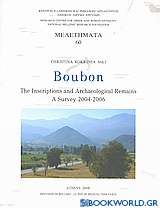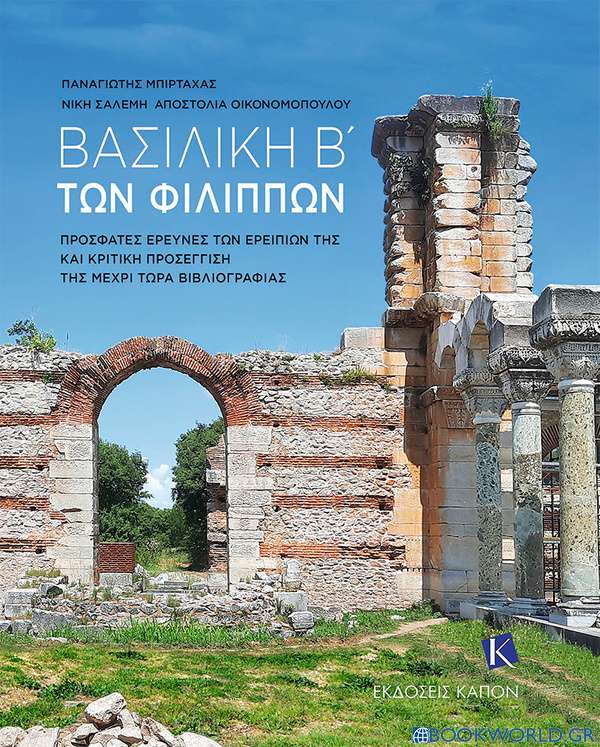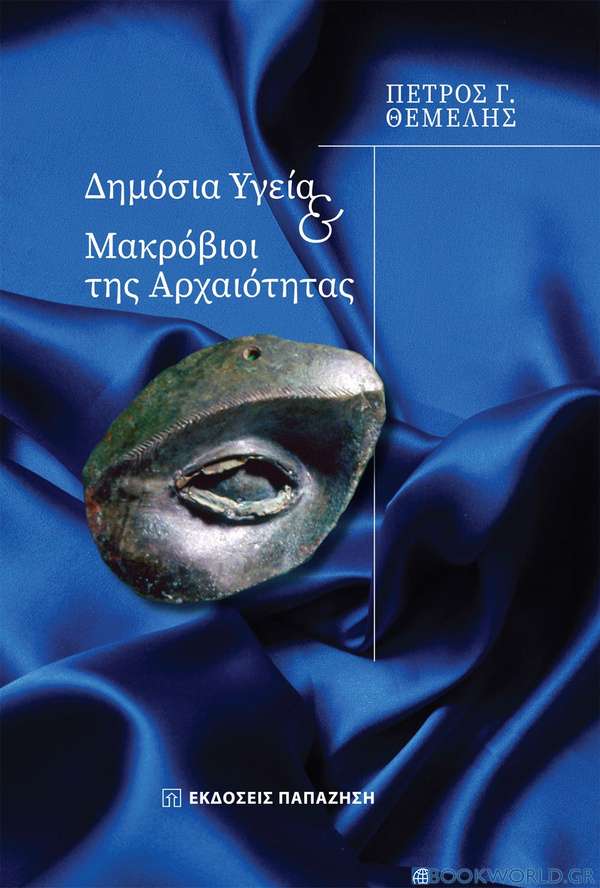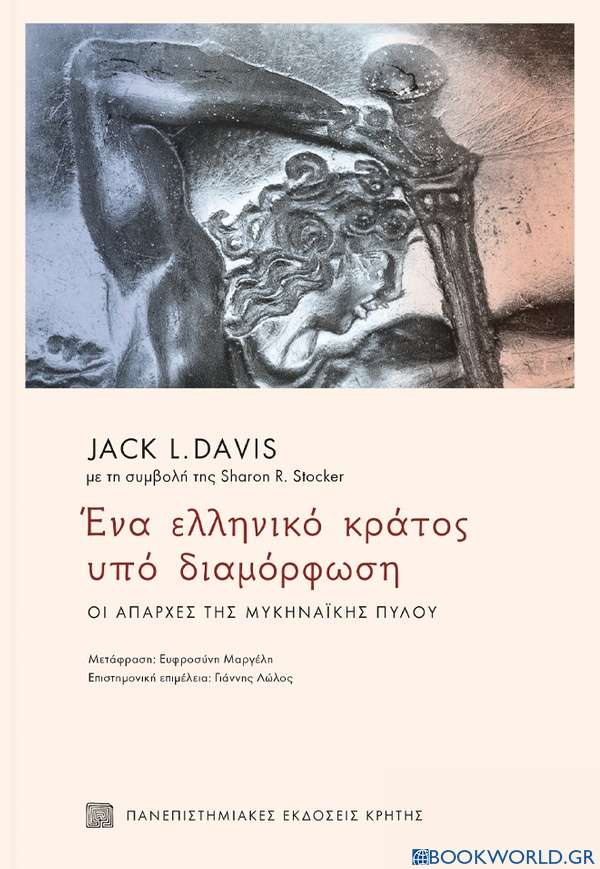Boubon
The Inscriptions and Archaeological Remains: A Survey 2004 - 2006
Εκδότης:
Εθνικό Ίδρυμα Ερευνών (Ε.Ι.Ε.). Ινστιτούτο Ελληνικής και Ρωμαϊκής Αρχαιότητας
Έτος:
2008
ISBN:
9789607905475
Σελίδες:
216
Εξώφυλλο:
Μαλακό

Τιμή εκδότη:€86,00
Η τιμή μας: €77,40
Boubon
The mountainous territory known in antiquity as the Cibyratis was among the last regions of southwest Asia Minor to be explored by western scholars and travelers in the 18th and 19th centuries. Boubon, the smallest of four cities known to have formed the Cibyratic city league, was identified as late as 1842, subsequent to its three neighbors and partners in that league. Surrounded by high mountain chains, the site of Boubon is situated 20 km south of the modern town of Golhisar, ancient Cibyra, near the small agricultural village of Ibecik and far from the tourist attractions of coastal Lycia and Caria.
Boubon receives only cursory mention in ancient literary works, and it has been treated similarly in modern scholarship. However, thanks to research by the Turkish archaeologist Jale Inan at the local sanctuary of the Imperial cult, Boubon has recently been established as the origin of a famous group of Imperial bronze statues that had been smuggled out of Turkey in the 1960s. Another consequence of Inan's work has been to draw the attention of the Turkish state to the problem of large-scale illegal excavations in the region. Following the appointment of a site guard, looting at the site has diminished considerably.
Among the purposes of scholarly research on remote archaeological sites is to underline the necessity of preserving cultural treasures that hold little promise for the tourist industry. In addition, exploration of small cities and villages offers the possibility of counterbalancing the one-sidedness of our sources for the ancient world: since the vast majority of literary authors and their readers lived in large civic centers, and literary works therefore mainly reflect life in those locations, completion of the picture is dependent on epigraphical and archaeological research on smaller communities.
The present volume presents the results of research in the epigraphy and archaeology of Boubon that has been conducted as part of the Cibyratis project under the direction of Thomas Corsten of the University of Heidelberg, in collaboration with the Institute for Greek and Roman Antiquity (KERA) of the Hellenic National Research Foundation (EIE) in Athens and the Department of Geomatics of the University of Karlsruhe, and with permission from the Turkish Ministry of Culture and the General Directorate of Monuments and Museums at Ankara. After a brief initial campaign in 2004, dedicated entirely to the recording of inscriptions at the site and in its immediate surroundings, there followed two survey seasons of three weeks each in August 2005 and in August 2006 in which the main purpose of the participants was to record as many of the architectural remains in Boubon and its territory as possible. Our campaigns of 2005 and 2006 at Boubon were financed by the APIITEIA program of the Greek Ministry of Research and Technology, on the condition that this book be printed by June 30, 2008. A chapter on the onomastics of Boubon by Thomas Corsten, and a contribution by Selene Psoma on Boubonian coins, could not be completed in time to be included in this volume, and will appear separately. [...]
(from the preface)
The mountainous territory known in antiquity as the Cibyratis was among the last regions of southwest Asia Minor to be explored by western scholars and travelers in the 18th and 19th centuries. Boubon, the smallest of four cities known to have formed the Cibyratic city league, was identified as late as 1842, subsequent to its three neighbors and partners in that league. Surrounded by high mountain chains, the site of Boubon is situated 20 km south of the modern town of Golhisar, ancient Cibyra, near the small agricultural village of Ibecik and far from the tourist attractions of coastal Lycia and Caria.
Boubon receives only cursory mention in ancient literary works, and it has been treated similarly in modern scholarship. However, thanks to research by the Turkish archaeologist Jale Inan at the local sanctuary of the Imperial cult, Boubon has recently been established as the origin of a famous group of Imperial bronze statues that had been smuggled out of Turkey in the 1960s. Another consequence of Inan's work has been to draw the attention of the Turkish state to the problem of large-scale illegal excavations in the region. Following the appointment of a site guard, looting at the site has diminished considerably.
Among the purposes of scholarly research on remote archaeological sites is to underline the necessity of preserving cultural treasures that hold little promise for the tourist industry. In addition, exploration of small cities and villages offers the possibility of counterbalancing the one-sidedness of our sources for the ancient world: since the vast majority of literary authors and their readers lived in large civic centers, and literary works therefore mainly reflect life in those locations, completion of the picture is dependent on epigraphical and archaeological research on smaller communities.
The present volume presents the results of research in the epigraphy and archaeology of Boubon that has been conducted as part of the Cibyratis project under the direction of Thomas Corsten of the University of Heidelberg, in collaboration with the Institute for Greek and Roman Antiquity (KERA) of the Hellenic National Research Foundation (EIE) in Athens and the Department of Geomatics of the University of Karlsruhe, and with permission from the Turkish Ministry of Culture and the General Directorate of Monuments and Museums at Ankara. After a brief initial campaign in 2004, dedicated entirely to the recording of inscriptions at the site and in its immediate surroundings, there followed two survey seasons of three weeks each in August 2005 and in August 2006 in which the main purpose of the participants was to record as many of the architectural remains in Boubon and its territory as possible. Our campaigns of 2005 and 2006 at Boubon were financed by the APIITEIA program of the Greek Ministry of Research and Technology, on the condition that this book be printed by June 30, 2008. A chapter on the onomastics of Boubon by Thomas Corsten, and a contribution by Selene Psoma on Boubonian coins, could not be completed in time to be included in this volume, and will appear separately. [...]
(from the preface)
| Τίτλος βιβλίου: | Boubon | ||
|---|---|---|---|
| Υπότιτλος βιβλίου: | The Inscriptions and Archaeological Remains: A Survey 2004 - 2006 | ||
| Εκδότης: | Εθνικό Ίδρυμα Ερευνών (Ε.Ι.Ε.). Ινστιτούτο Ελληνικής και Ρωμαϊκής Αρχαιότητας | ||
| Συντελεστές βιβλίου: | Κοκκινιά, Χριστίνα (Επιμελητής) | ||
| ISBN: | 9789607905475 | Εξώφυλλο βιβλίου: | Μαλακό |
| Σειρά εκδότη: | Μελετήματα | Σελίδες: | 216 |
| Στοιχεία έκδοσης: | Ιούλιος 2008 | Διαστάσεις: | 28x21 |
| Κατηγορίες: | Ιστορία > Αρχαιολογία | ||
Δεν βρέθηκαν στοιχεία για τον συγγραφέα











